Some people say that addiction is not a choice, it’s a disease. As you know, I’m not one of them. But even those of us who believe in choice ask how much volition (intention or will) is involved in the choice to use or not. I think that choice is a lot more complicated than most people think. For now, I’ll skip the philosophical objections to the idea of “free choice.” Sticking to brass tacks, I think that volition interacts with many other factors when we make choices — especially choices about addiction.
 Choices are based on appraisals (interpretations) of situations. People with addictions choose whether to get high or abstain based on appraisals of the quality of the high, the consequences of indulging, the proximity of other people who might approve or disapprove, and so forth. Since our appraisals are determined by factors outside our volition or awareness, especially in a complex situation changing moment by moment, the choice we make in that situation is less determined by our volition and more determined by luck and circumstance.
Choices are based on appraisals (interpretations) of situations. People with addictions choose whether to get high or abstain based on appraisals of the quality of the high, the consequences of indulging, the proximity of other people who might approve or disapprove, and so forth. Since our appraisals are determined by factors outside our volition or awareness, especially in a complex situation changing moment by moment, the choice we make in that situation is less determined by our volition and more determined by luck and circumstance.
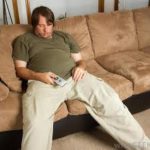 Appraisals are also strongly affected by internal variables: mood states, present emotions, beliefs, (biased) recollections of previous events. But this list doesn’t yet scratch the surface. There is my sense of emptiness and dislocation at this moment, compared with how I think I’ll feel after getting high, compared with how much drug I possess or can afford, in the context of building excitement and/or building anxiety and shame. These “internal state variables,” as psychologists call them, are highly complex and they change from moment to moment. Since that mix of factors will certainly affect one’s choice (e.g., to use or abstain), I can’t see how the choice can be entirely voluntary, entirely an expression of “free will.”
Appraisals are also strongly affected by internal variables: mood states, present emotions, beliefs, (biased) recollections of previous events. But this list doesn’t yet scratch the surface. There is my sense of emptiness and dislocation at this moment, compared with how I think I’ll feel after getting high, compared with how much drug I possess or can afford, in the context of building excitement and/or building anxiety and shame. These “internal state variables,” as psychologists call them, are highly complex and they change from moment to moment. Since that mix of factors will certainly affect one’s choice (e.g., to use or abstain), I can’t see how the choice can be entirely voluntary, entirely an expression of “free will.”
Over the time scale of development, habits evolve and consolidate, creating a spiral of increasingly strong predispositions to seek addictive rewards while alternative rewards become less meaningful. Is there any voluntary choice left after those habits congeal? Yes, I believe there is. Which is how people can slow down or quit. Recovery involves choice, and choice 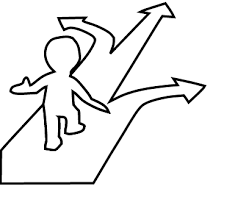 cannot suddenly be imported into a system that has none. Changes in appraisal, emotion, and social factors strongly influence volition, which influences actions, all of which alters one’s belief in oneself — one’s self-efficacy. That’s why self-talk and help from other people
cannot suddenly be imported into a system that has none. Changes in appraisal, emotion, and social factors strongly influence volition, which influences actions, all of which alters one’s belief in oneself — one’s self-efficacy. That’s why self-talk and help from other people  (friends, partners, books, stories, podcasts) can be so important. Once addicts tune into the possibility of volitional choices, the mechanism underlying volition itself grows in strength and availability.
(friends, partners, books, stories, podcasts) can be so important. Once addicts tune into the possibility of volitional choices, the mechanism underlying volition itself grows in strength and availability.
In my book and elsewhere, I emphasize how synaptic networks can compete with each other, but when any of these networks is activated repeatedly, it becomes stronger, more likely to win the competition. This is the case when addiction arises in development, but also when it declines, replaced by the desire for and belief in alternative outcomes. I also think that addicts temporarily lose the capacity — or at least belief in the capacity — to make reflective judgments, and that loss is underpinned by a loss of connectivity between the prefrontal cortex (“the bridge of the ship”) and the striatum (“the engine of desire”). Then this connectivity can return, gradually, as people recover. Now newly forged connections between these neural systems allow desire and decision-making to work together in the service of future-oriented goals. To put it simply, I see this as the resurgence of volition in a system overwhelmed by habit.
There are many other goads, nudges, constraints, and impacts on volition — the voluntary component of choice. Most important are the psychological mechanisms of “now appeal” and ego fatigue. The passage of time also has enormous impact on volitional choice. Also critical are the roles of impulsive and compulsive action tendencies. How much volition  is available during the impulsive phase of addiction, as one’s imagined future slides down a sort of chute into the “now”? Some, I think, but not much. Once the compulsive stage of addiction is reached, how much volition is present? Now action is put in motion before one is even aware of making a choice. Still, compulsion is not abnormal or pathological. When we examine more mundane decisions, like whether to check that the stove is turned off, it’s clear that volition and compulsion mix together, competing and cooperating, as we make choices. It’s not mandatory to recheck the stove.
is available during the impulsive phase of addiction, as one’s imagined future slides down a sort of chute into the “now”? Some, I think, but not much. Once the compulsive stage of addiction is reached, how much volition is present? Now action is put in motion before one is even aware of making a choice. Still, compulsion is not abnormal or pathological. When we examine more mundane decisions, like whether to check that the stove is turned off, it’s clear that volition and compulsion mix together, competing and cooperating, as we make choices. It’s not mandatory to recheck the stove.
According to a developmental-learning model (like mine, or that of Maia Szalavitz), interpersonal, social, emotional, and personality factors all contribute to a developmental trajectory that continues to adjust itself, to consolidate itself. So we don’t have to waste another moment conceiving of addiction as a disease. Using personal reports, psychological research, and neurobiological findings as our sources, we can achieve a far more detailed understanding of choice in the context of development, with its phases of relative stuckness and relative flexibility. We can also study the links between brain changes and environmental forces, to increase our knowledge of how addiction develops and how it can be overcome.


 commentaries, and half a year later the total came to 15 — shock! — many from well-known researchers and journalists, including Kent Berridge, George Ainslie, Maia Szalavitz, and Sally Satel. The punchline for me was that I had to write replies to each of these commentaries, to be printed along with them in the journal. And let me tell you, these were sculpted pieces of academic writing — some of them many pages in length — so I’ve had to sweat blood to reply to them. And I’ve still got more than half left to do.
commentaries, and half a year later the total came to 15 — shock! — many from well-known researchers and journalists, including Kent Berridge, George Ainslie, Maia Szalavitz, and Sally Satel. The punchline for me was that I had to write replies to each of these commentaries, to be printed along with them in the journal. And let me tell you, these were sculpted pieces of academic writing — some of them many pages in length — so I’ve had to sweat blood to reply to them. And I’ve still got more than half left to do. lumping them all together. So, he said, it’s a good thing that the DSM has dropped “addiction” (almost) from its vocabulary. Just like the phrase “nervous breakdowns” has disappeared from the popular lexicon: it’s about time we got rid of the outmoded term “addiction.” The culprit, for him, is imprecision. Addiction is an imprecise term, and worse, it brings with it “many problematic accretions and connotations” — no doubt he means accusations of blame, self-indulgence, moral decay, and the resultant stigmatization of addicts.
lumping them all together. So, he said, it’s a good thing that the DSM has dropped “addiction” (almost) from its vocabulary. Just like the phrase “nervous breakdowns” has disappeared from the popular lexicon: it’s about time we got rid of the outmoded term “addiction.” The culprit, for him, is imprecision. Addiction is an imprecise term, and worse, it brings with it “many problematic accretions and connotations” — no doubt he means accusations of blame, self-indulgence, moral decay, and the resultant stigmatization of addicts.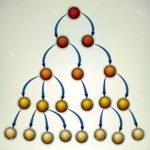 So Flanagan replaces the word “phenomenon” with “phenomena.” But what are these distinct entities? To me this is like trying to describe and differentiate the various species included under the label “birds” — so that we can do away with the term “bird” altogether. Is that a good idea?
So Flanagan replaces the word “phenomenon” with “phenomena.” But what are these distinct entities? To me this is like trying to describe and differentiate the various species included under the label “birds” — so that we can do away with the term “bird” altogether. Is that a good idea? people who get addicted to meth have tended to feel an absence of power, or commitment, or
people who get addicted to meth have tended to feel an absence of power, or commitment, or  relevance in their lives. They are most bothered by the flatness of their existence. Whereas people attracted to opiates (like me) are fundamentally afraid of losing warmth, acceptance, and connection with other people. We grow up feeling unsafe because we are hyper-aware of our aloneness, and the soothing quality of opiates eases the hurt.
relevance in their lives. They are most bothered by the flatness of their existence. Whereas people attracted to opiates (like me) are fundamentally afraid of losing warmth, acceptance, and connection with other people. We grow up feeling unsafe because we are hyper-aware of our aloneness, and the soothing quality of opiates eases the hurt. As for the term “addiction,” I don’t think replacing it with “substance use disorder” is going to get rid of the “many problematic accretions and connotations” Flanagan worries about. That kind of modernization of terminology doesn’t seem to help alienated or marginalized groups. For example, replacing “retarded” with “delayed” never erased the stigmatization of people who can’t think as quickly as others. So in this case, let’s not throw out the baby or the bathwater. Let’s continue to explore how all addictions embody fundamental changes in how we think, feel and act. But let’s also try to clarify how those changes take different forms, leading to different outcomes, for different people.
As for the term “addiction,” I don’t think replacing it with “substance use disorder” is going to get rid of the “many problematic accretions and connotations” Flanagan worries about. That kind of modernization of terminology doesn’t seem to help alienated or marginalized groups. For example, replacing “retarded” with “delayed” never erased the stigmatization of people who can’t think as quickly as others. So in this case, let’s not throw out the baby or the bathwater. Let’s continue to explore how all addictions embody fundamental changes in how we think, feel and act. But let’s also try to clarify how those changes take different forms, leading to different outcomes, for different people.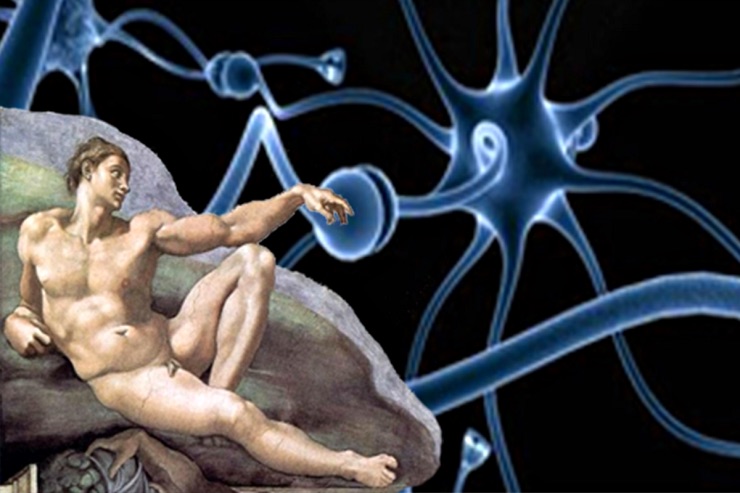
 too religious, dogmatic, disempowering, cultish. Which is unfortunate because although 12-step is not the only way to get sober, it is one way, and it’s been effective for millions of people over the past 80 years.
too religious, dogmatic, disempowering, cultish. Which is unfortunate because although 12-step is not the only way to get sober, it is one way, and it’s been effective for millions of people over the past 80 years.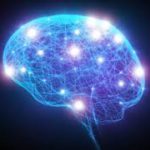 In recent years I’ve been studying neuroplasticity on an informal basis and applying its principles to my daily life, especially vis-à-vis my addictive propensities: Chocolate truffles! Mad Men! Facebook!
In recent years I’ve been studying neuroplasticity on an informal basis and applying its principles to my daily life, especially vis-à-vis my addictive propensities: Chocolate truffles! Mad Men! Facebook!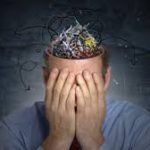 strengthens your capacity to do so again. Thanks to your malleable brain, the more you do something sober the easier it becomes. But you may need to muddle through a thousand situations sober before it comes as naturally as it did when you were drunk. It’s hard for most of us to stick to our resolve that many times. But with the support of others it is possible.
strengthens your capacity to do so again. Thanks to your malleable brain, the more you do something sober the easier it becomes. But you may need to muddle through a thousand situations sober before it comes as naturally as it did when you were drunk. It’s hard for most of us to stick to our resolve that many times. But with the support of others it is possible.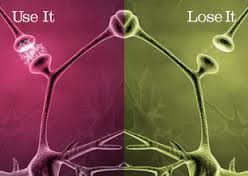 AA contends that because our willpower has “failed utterly” to get us sober, we have no recourse but God. Really? Well, what does every participant at every meeting find every time? What is the common denominator? Not God, but other people getting sober. We find community. The generous support of other human beings carries us when we cannot carry ourselves.
AA contends that because our willpower has “failed utterly” to get us sober, we have no recourse but God. Really? Well, what does every participant at every meeting find every time? What is the common denominator? Not God, but other people getting sober. We find community. The generous support of other human beings carries us when we cannot carry ourselves.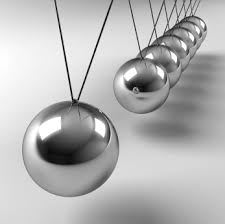
 Johann Hari, as revisited in
Johann Hari, as revisited in  So those are a few of the headline topics that we can deal with this year. And there are others. With Trump in the US,
So those are a few of the headline topics that we can deal with this year. And there are others. With Trump in the US,  What is going on in terms of the international pendulum swing between draconian repressive approaches and the ever-more-
What is going on in terms of the international pendulum swing between draconian repressive approaches and the ever-more- enlightened drug policies of countries (like the UK, Canada, and Australia) where people are stepping away from the “brain disease” model and the nasty habit of throwing addicts in jail? Cannabis will soon be legal throughout both Canada and the US! And it seems they’re
enlightened drug policies of countries (like the UK, Canada, and Australia) where people are stepping away from the “brain disease” model and the nasty habit of throwing addicts in jail? Cannabis will soon be legal throughout both Canada and the US! And it seems they’re 
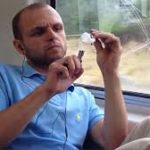 per day. Sleep became sporadic and unpredictable. He could no longer think in straight lines, and fantastical whims soon replaced his customary rationality. His business fell apart, he moved in with his dealer, and his precious relationship with his young daughter turned into a parody of parenting, with him sneaking out to the car every hour or two for another hit. Meth comes on strong and brings with it clarity, optimism and brilliant energy. But Brian’s sleep loss meant that the high was increasingly short-lived. With the first hints of loss, he would grab for his pipe, eager beyond reason for another launch.
per day. Sleep became sporadic and unpredictable. He could no longer think in straight lines, and fantastical whims soon replaced his customary rationality. His business fell apart, he moved in with his dealer, and his precious relationship with his young daughter turned into a parody of parenting, with him sneaking out to the car every hour or two for another hit. Meth comes on strong and brings with it clarity, optimism and brilliant energy. But Brian’s sleep loss meant that the high was increasingly short-lived. With the first hints of loss, he would grab for his pipe, eager beyond reason for another launch. Other (interconnected) feedback loops facilitate and consolidate addiction. They include social isolation, reinforced by the addiction, which leaves the addict with fewer opportunities to reconnect with people, or with healthier pleasures. They include the rationalizations that addicts know too well: if I’m such a bad person, or so misunderstood, then I might as well do it again. Brian was a self-reflective guy; he knew how much he had lost. His ongoing self-destruction seemed a punishment for what he perceived as his failure.
Other (interconnected) feedback loops facilitate and consolidate addiction. They include social isolation, reinforced by the addiction, which leaves the addict with fewer opportunities to reconnect with people, or with healthier pleasures. They include the rationalizations that addicts know too well: if I’m such a bad person, or so misunderstood, then I might as well do it again. Brian was a self-reflective guy; he knew how much he had lost. His ongoing self-destruction seemed a punishment for what he perceived as his failure.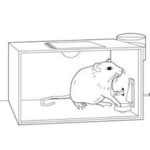 According to classical learning theory, rewarded behaviours proliferate, while behaviours leading to adverse consequences are extinguished. Yet this clearly misses the point when it comes to the development of emotional problems. Rather, it sometimes seems that the most
According to classical learning theory, rewarded behaviours proliferate, while behaviours leading to adverse consequences are extinguished. Yet this clearly misses the point when it comes to the development of emotional problems. Rather, it sometimes seems that the most  unpleasant conditions are the most likely to become entrenched. Mental and emotional states characterized by suffering appear in adolescent development with remarkable frequency, and they continue to dominate the personality for years if not for life. Why would such negative states become attractors, become concretized and stuck?
unpleasant conditions are the most likely to become entrenched. Mental and emotional states characterized by suffering appear in adolescent development with remarkable frequency, and they continue to dominate the personality for years if not for life. Why would such negative states become attractors, become concretized and stuck?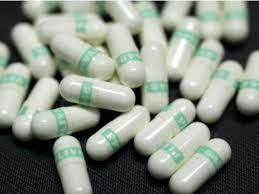 ineffective. (
ineffective. (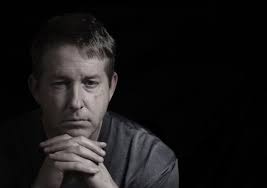 more fault we see; and so rejection, sadness, and shame are amplified. Anxiety draws attention to threat. That is its evolutionary purpose. Thus anxiety disorders arise from a very simple, very pernicious feedback cycle. The more anxiety, the more attention to what could go wrong, to the dangers implicit in the environment. In turn, this thinking amplifies the feeling of anxiety. And so on.
more fault we see; and so rejection, sadness, and shame are amplified. Anxiety draws attention to threat. That is its evolutionary purpose. Thus anxiety disorders arise from a very simple, very pernicious feedback cycle. The more anxiety, the more attention to what could go wrong, to the dangers implicit in the environment. In turn, this thinking amplifies the feeling of anxiety. And so on.